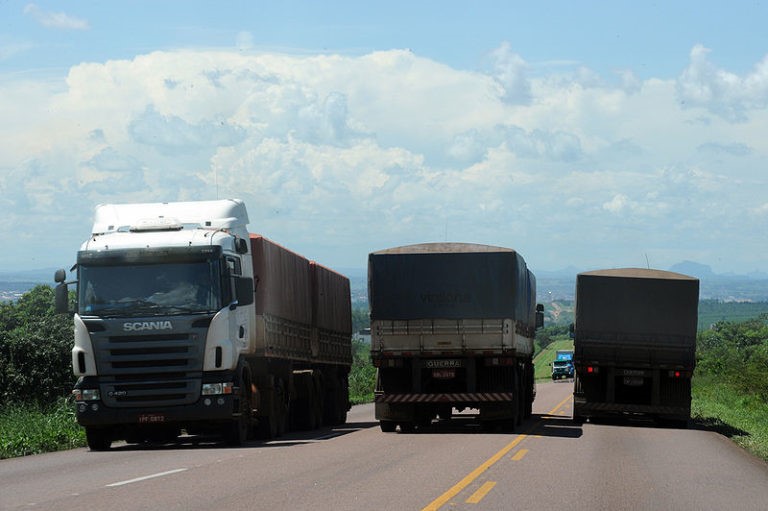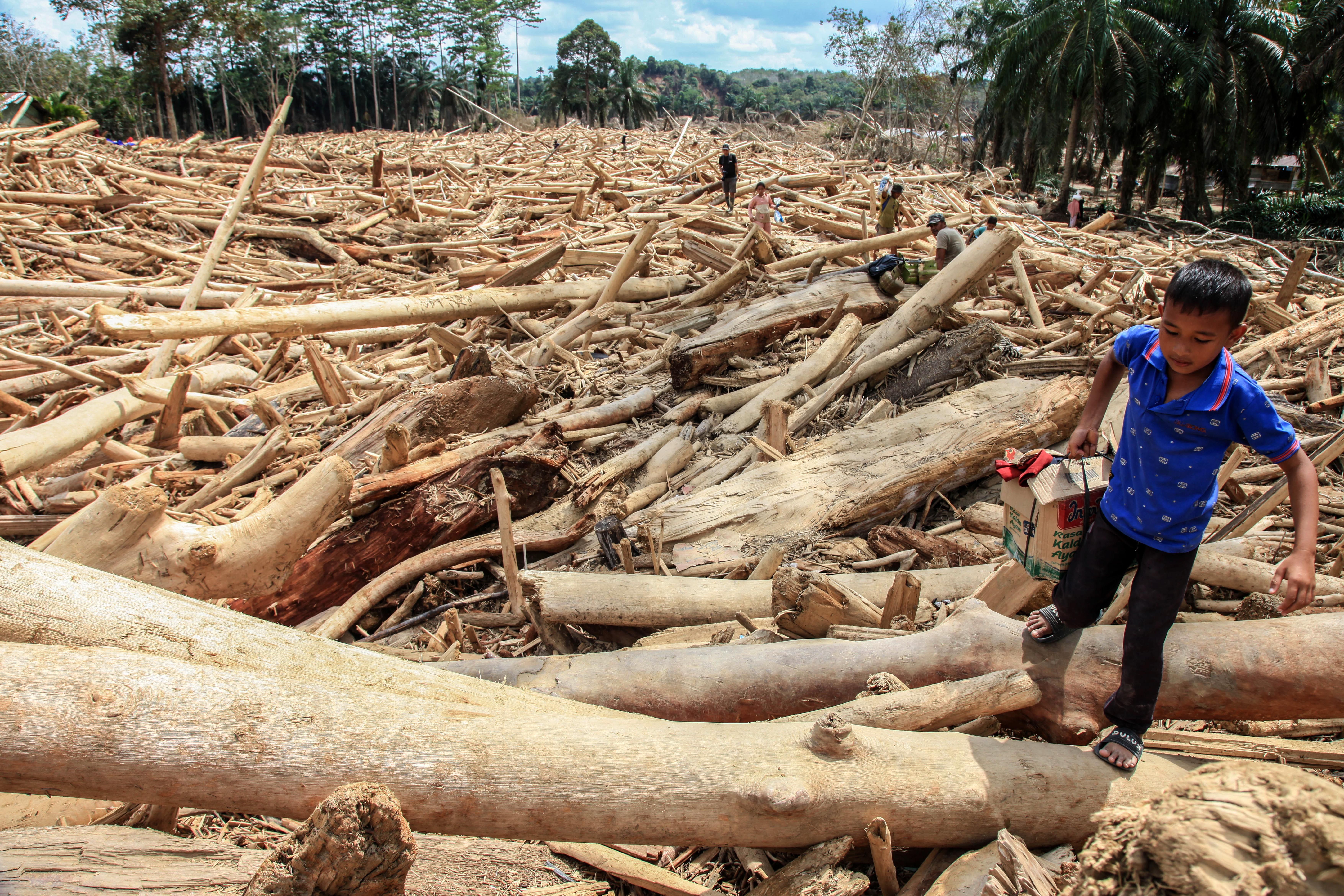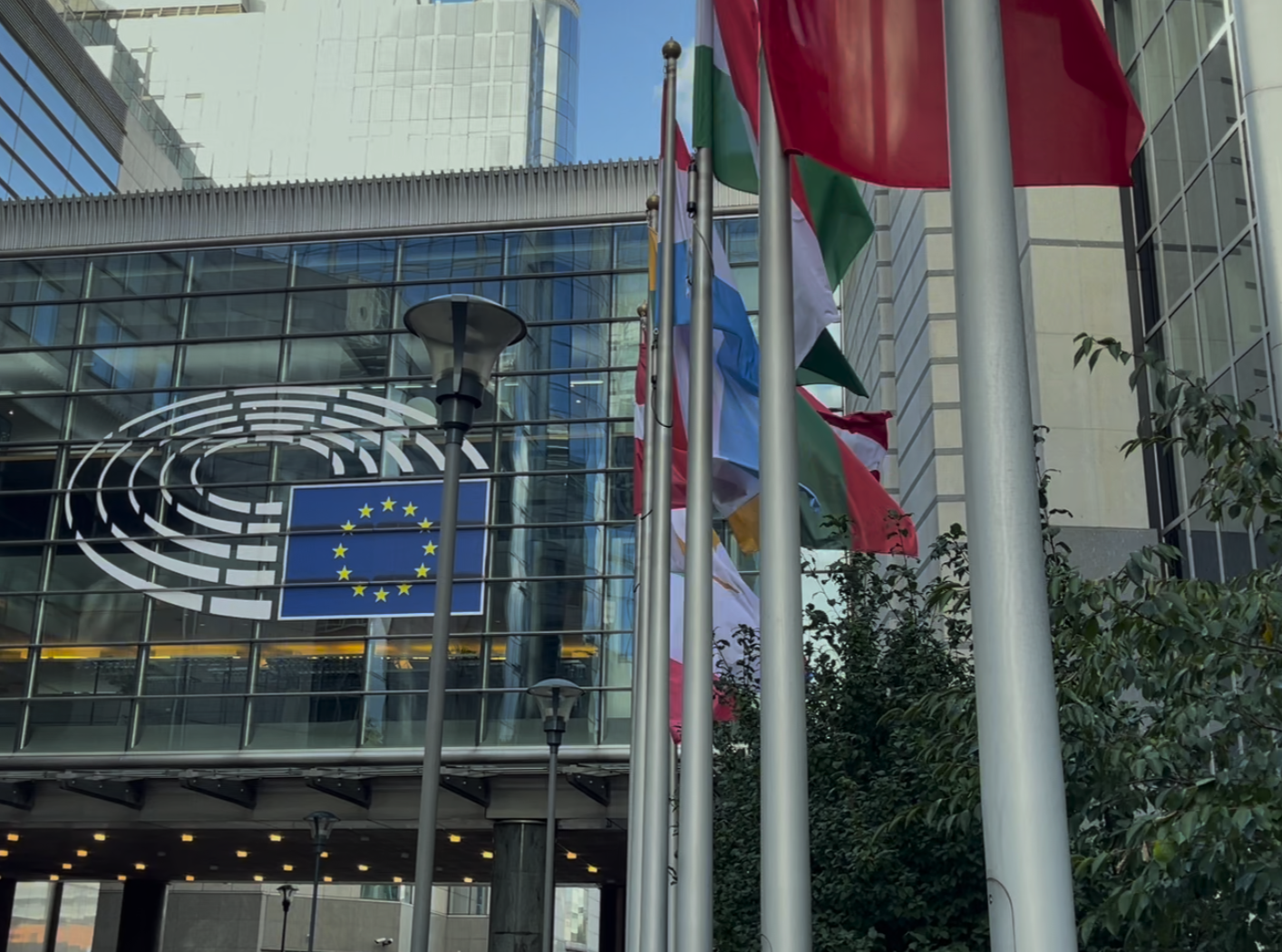
Commodities on the move on the improved BR-163 highway
A recent study by
the Brazilian environmental NGO Imazon has revealed that deforestation within
conservation units in the Brazilian Amazon increased by 80% between 2012 and
2015, compared to a 35% increase in deforestation generally. A total of 237,000
hectares of forest was cleared within parks and other protected areas during
the period 2012-2015, leading to the loss of 136 million trees.
The most affected conservation units are found around the
“arc of deforestation”, where the agricultural frontier continues to advance,
especially in the states of Para, Rondonia, Mato Grosso and Acre. As recently
revealed by Mongabay,
deforestation in these regions is also connected to development projects – the
construction of roads, ports and waterways – meant to facilitate the
transportation of agricultural commodities, especially soy, from farm to
national and international markets. Most of the conservation units concerned
allow human activity, so not all deforestation within them can be automatically
assumed to be illegal. However, the numerous case studies documented in the
report indicate that the majority of the recent increase can be attributed to a
surge in illegal conversion.
Imazon’s study reveals that one of the worst affected areas
is the one along the BR-163 motorway, which connects Cuiaba (Mato Grosso) to
Santarem (Para). Land grabbing, farming and infrastructure projects in the
region are contributing to illegal deforestation within conservation units,
which were created along the motorway exactly to contain future deforestation
resulting from its construction.
In order to tackle the increasing problem, Imazon is calling
for urgent action by governments and campaigning organisations to force
agribusiness firms to stop buying products grown on the illegally deforested
land, and to ensure banks stop financing such activities. They cite an example
from October 2016, when IBAMA (Brazil’s environment enforcement agency) fined a
number of banks, including Santander, for having financed corn and soybean
planting on land which was illegally deforested. Such actions were instrumental
in driving the dramatic reduction in deforestation in the Brazilian Amazon
during 2004-2009, a reduction which has recently gone
into reverse.
According to O
Eco, a Brazilian environmental news portal, a key factor in that reversal
has been cuts in funding for enforcement of legislation at conservation areas.
ICMBio, the federal agency responsible for conservation units, lost 40% of its
staff between 2010 and 2016. IBAMA has seen reductions of 33% and the closure
of 89 of its bases throughout the country.
Illegal conversion is not the only threat posed to the
Brazilian Amazon’s conservation areas by agribusiness. Another is legal
declassification. Amazonia
Real, another Brazilian environmental news portal, has highlighted an
increasing trend whereby successive federal governments have approved changes
to the boundaries of conservation units, in response to pressure from
agribusinesses.
A good example is provided by the Bom Futuro National
Forest, in Rondonia. As documented by O Eco, in 2009, it had over 35,000 heads
of cattle within its limits. This led IBAMA to lead a joint enforcement team of
over 400 police and other federal agents into the area that year to halt the
deforestation, remove the cattle and bring the area back under control.
However, following lobbying by local political and business interests, the
federal government changed the most deforested area of Bom Futuro (144,000
hectares) into the Rio Pardo Environment Protected Area (APA) and the Rio Pardo
State Forest, creating the conditions for illegal cattle ranching to continue.
These kinds of boundary changes help drive illegal
deforestation elsewhere. Elis Araújo, one of the IMAZON report’s authors, told
O Eco that recent changes to the boundaries of protected areas create the
perception among land grabbers that they can benefit from such measures in the
future. In February, Earthsight reported
on the boundary change at the Jamanxim National Forest in Para, which
Greenpeace and Brazilian civil society have denounced as an amnesty to illegal
farmers and land grabbers.



